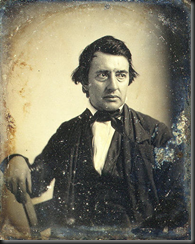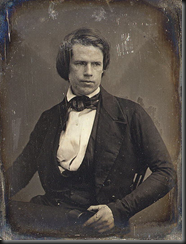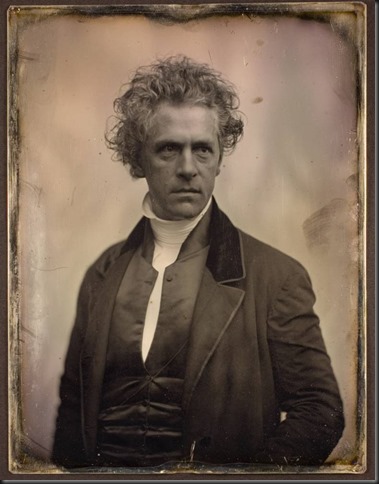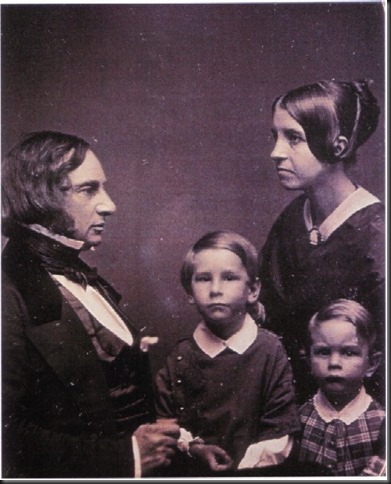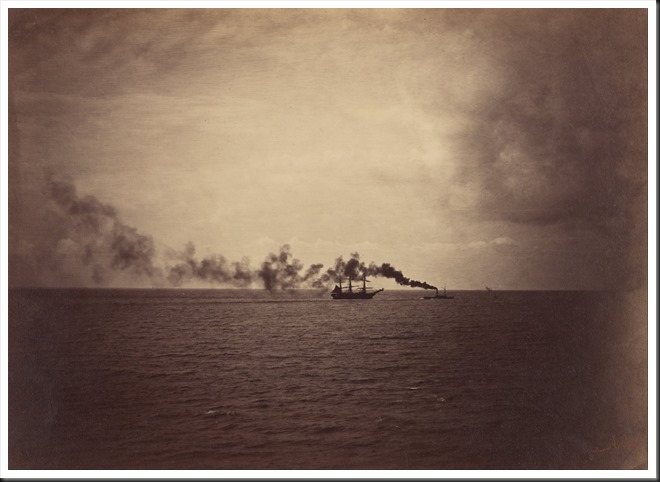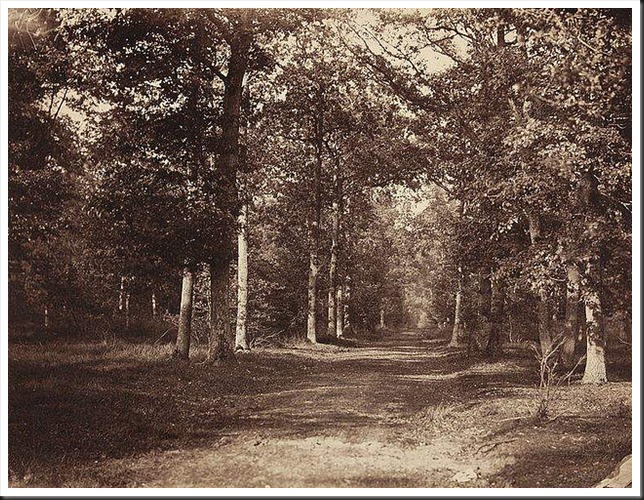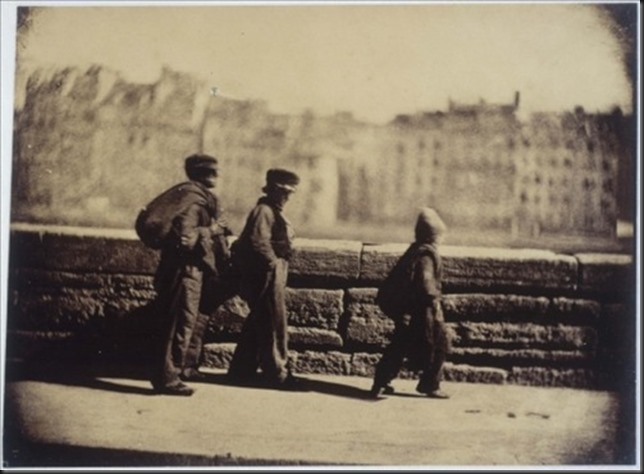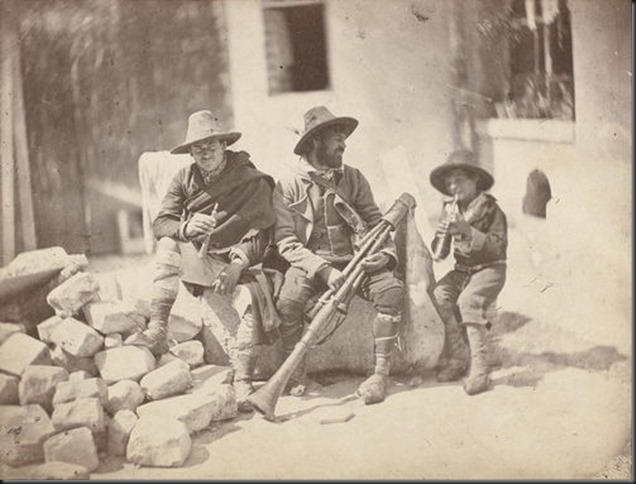The First Photographers – 1840 – 1860
The 20-year period beginning in 1840 saw an explosion in photography. Prior to that the camera obscura could project upside down and backwards images on a sheet of paper that could be traced to produce a drawing. In fact, that is how painters used it. But the projection could not be captured and saved…, until Louis Daguerre invented the daguerreotype.
Before the daguerreotype, if you wanted a portrait you hired a painter, an option that was available to only the wealthy. But the daguerreotype made portraits available to many more people. Painters initially rejected the notion, believing that their portraits were superior. But most eventually conceded that the daguerreotype could reproduce a more accurate image of the person in less time and more economically.
The daguerreotype had a life of merely ten years and was followed first by the calotype and then by the collodion process. And before the end of the century Kodak processed the role film which opened photography to everyone. Read more at In the Beginning There Was a Camera but No Film.
Since the daguerreotype and its successors were fast, accurate and highly detailed, they were seen as great ways of documenting the physical world but incapable of creating art. But, even in those early days, some pioneering photographers pursued photography as a legitimate artistic medium and produced stunning, ground-breaking images that still touch our souls more than a century and a half later. The struggle to recognize photographs as art began with the daguerreotype and continues to this day (although to a lesser degree).
The Pioneers
Three individuals were instrumental in the innovations in light-sensitive media that led up to photography as we know it. They are Louis Daguerre, William Henry Fox Talbot and Frederick Scott Archer. Not only did they make critical breakthroughs, but they made photographs with their processes.
Louis Daguerre – the Daguerreotype
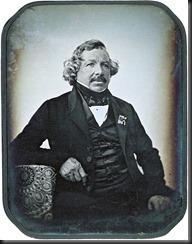 |
Loui Daguerre was born in Northern France on November 18, 1787. His contribution to photography was the invention of the daguerreotype, an image captured on a copper plate sensitizes with silver iodide. The daguerreotype was an immediate success and was largely used for portraits. Now nearly everyone could afford them.
Daguerre himself also made daguerreotypes, among them were portraits, street scenes and still lives.
Here are a couple examples of his work.
View of the Boulevard de Temple |
Daguerre Atelier |
William Henry Fox Talbot – the Calotype
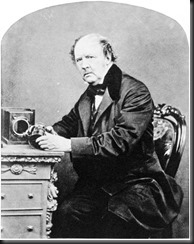 |
William Henry Fox Talbot was born on February 11, 1800 in England, west of London. He was working on a process that was to bring the age of the daguerreotype to a close just ten years after it began.
Talbot was already working on a paper process before Louis Daguerre introduced the daguerreotype in 1839. In fact, he had produced photographs with his salt process as early as 1835.
In 1841 he announced the calotype process which created a paper negative from which many prints could be made. Its disadvantage over the daguerreotype was that the prints were not sharp and couldn’t reproduce the exquisite detail of the daguerreotype. Nevertheless, in the end this technology won out.
Here is a sampling of Talbot’s work.
David Octavius Hill |
Photomicrograph of Insect Wings |
Frederick Scott Archer – the Collodion Process
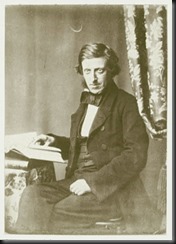 |
Frederick Scott Archer was another Englishman, born in 1813. His contribution to photography was the development of the collodion process that used a glass plate on which the light-sensitive emulsion was spread.
At first the photograph had to be captured while the emulsion was still wet but shortly after that dry emulsions on glass plates were developed.
Now, many sharp pictures could be made from a single negative.
Photography was off and running. The only thing left to be done was to put a dry emulsion on film which Eastman Kodak patented in 1888. And now photography was in everyone’s hands.
Here are two examples of Archer’s work.
Kenilworth Castle Ante-Room, Great Hall |
Kenilworth Castle Ante-Room, Grand Entrance |
The Emergence of Photography as Art
Now that negatives and prints could be more easily made, photography spread across the globe. While the popular wisdom about photography was that it was not a suitable medium for art, other pioneers disagreed. Tree genres emerged – portraiture, landscapes and street photography – that can trace their origins back to this time period.
Southworth and Hawes – Portraits
Two photographers in Boston joined together to create an elite portrait studio. They nearly exclusively used the daguerreotype and photographed some of the most prominent people of the time. Their names were Albert Sands Southworth and Josiah Johnson Hawes. Their studio was known as Southworth and Hawes and they promoted themselves as “ARTISTS.”
Some of their better-known clients were Louisa May Alcott, Ralph Waldo Emerson, Oliver Wendel Holmes, Sam Houston, Jenny Lind, Henry Wadsworth Longfellow, Daniel Webster. But there were many more.
They gave portraiture a powerful start with the techniques they applied and the sensitivity to their clients. A contemporary of theirs said this about them. “Their style, indeed, is peculiar to themselves, presenting beautiful effects of light and shade, and giving depth and roundness together with a wonderful softness or mellowness. These traits have achieved for them a high reputation with all true artists and connoisseurs.”
Rollin Herber Neale |
Longfellow Family |
Like great portraits, these daguerreotypes capture subjects’ personalities, but they were also crafted for the use to which they would be used – for personal family use or for public figures.
Gustave Le Gray – Landscapes
Other photographers took their cameras outside to photograph the world around them. And they produce some beautiful works.
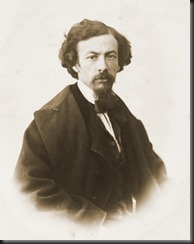 |
Gustave Le Gray was born in France on August 30, 1820 and came to be considered one of France’s greatest photographers. He was lauded for his technical innovations, his instruction of other prominent French photographers and his extraordinary imagination.
He became the personal photographer of Napoleon III and became a successful portraitist. But he is most known for his seascapes.
One of the techniques he developed was printing a seascape with two negatives, one for the water and the other for the sky. This is a technique that would gain in popularity.
Here are two samples of his work.
Seascape with Sailing Ship and Tugboat |
Forest of Fontainebleau |
Landscape photography as an art form is off to a good start.
Charles Nègre– Street Photography
A third genre that got its start during this period is what we now call street photography.
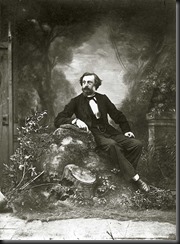 |
Charles Nègre was born in France on May 9, 1820 and began his artistic career as a painter. He was encouraged by his mentor, Paul Delaroche, to use the camera to get studies for his paintings.
Nègre is best known for his photographs that capture and freeze the moment. In this regard he might be considered a predecessor of Henri Cartier-Bresson.
Perhaps his most famous piece is of three chimney sweeps walking down the street. There is some conjecture that it may have been a posed photograph intended to be used for a painting but nevertheless, it has the spontaneity as if it was captured in the moment.
He did a bit of portrait work that is really quite striking. But his street scenes stand out because they were so unusual, and they document an aspect of life that was not captured by other photographers of his time.
Chimney Sweeps Walking |
Italian Street Musicians |
Conclusion
The first 20 years of photography were filled with innovation. It required a deep knowledge of chemistry to develop the processes. Likewise, it took a deep knowledge of chemistry to prepare the medium, capture the image and develop it. Many different approaches were tried, most of them passing into memory.
The important result from this period is the experimentation that was done on the types of photography. Portraiture was a natural outcome and landscapes were not far behind. But during this period photographers also started documenting daily life.
(1167)

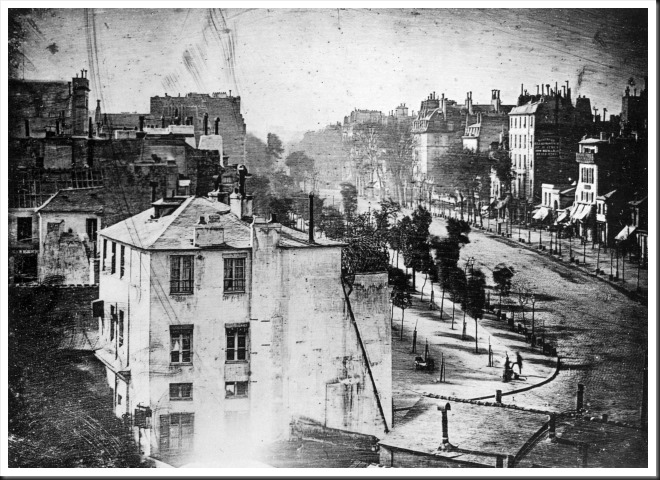
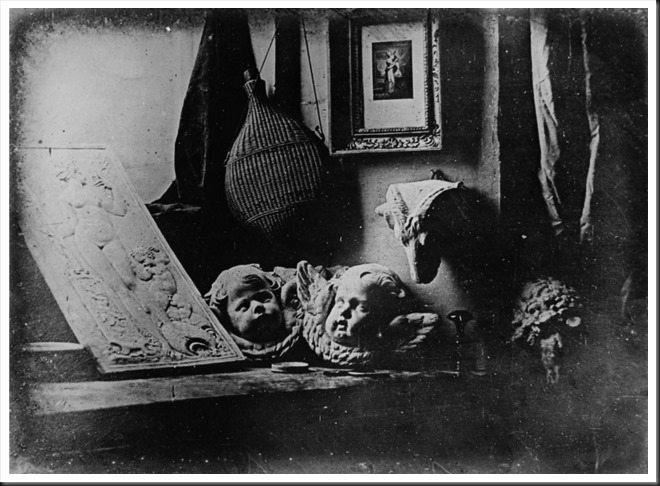
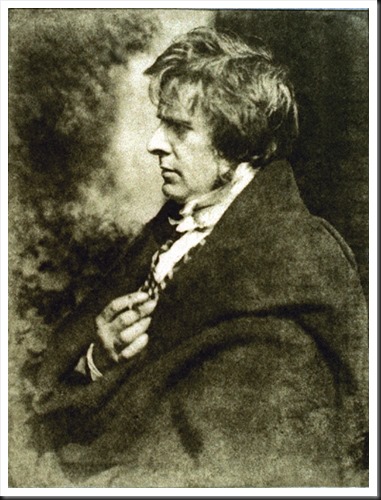
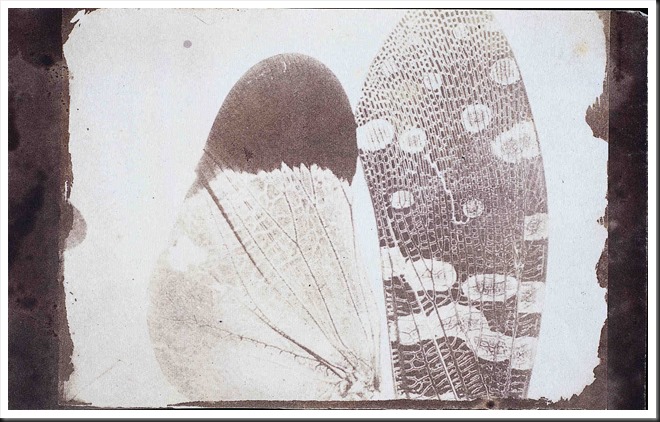
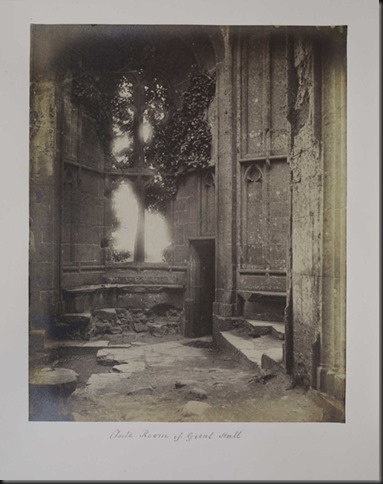
![[The Grand Entrance, Kenilworth] [The Grand Entrance, Kenilworth]](http://ralphnordstromphotography.com/wordpress/wp-content/uploads/2020/05/05349401_thumb.jpg)
